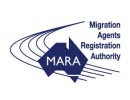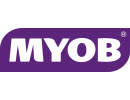Commencing from the 2016 and later income years, an eligible Managed Investment Trust (MIT) may choose to apply the attribution rules in Division 276 of the Income Tax Assessment Act 1997 (ITAA 1997).
The AMIT regime was established by the Australian Government to provide a qualifying managed investment trust with an exclusive set of tax rules that replaces the existing tax rules.
It provides funds with improved flexibility and unitholders greater certainty in relation to their tax treatments.
Where that choice is made, the MIT becomes known as an Attribution Managed Investment Trust (AMIT).
Where you have an investment in an AMIT, and you receive a distribution, the components of the distribution will be set out in an AMIT member annual statement (AMMA Statement) that will be issued to unitholders after the end of each financial year.
AMIT COST BASE INCREASE OR DECREASE AMOUNT
A portion of the distribution may be allocated as a “non-assessable amount”.
This amount is not disclosed in your tax return but is required when calculating a CGT gain or loss relating to disposal of your units in the Trust.
When this occurs, the cost base of your units needs to be adjusted by the amount so distributed as follows
- where the distribution paid to you exceeds the taxable income attributed, you are required to decrease the CGT cost base of your units in the Trust by the excess
- where the amount distributed to you is less than the taxable income attributed to you, ie a shortfall, then the CGT cost base of your units needs to be increased by the shortfall
We suggest you keep track of these distributions each year and update your investment portfolios accordingly.
That way, when disposing of the units in the future, the cost base will be correctly reflected.
If we prepare your SMSF annual return, we update the figures each year.









